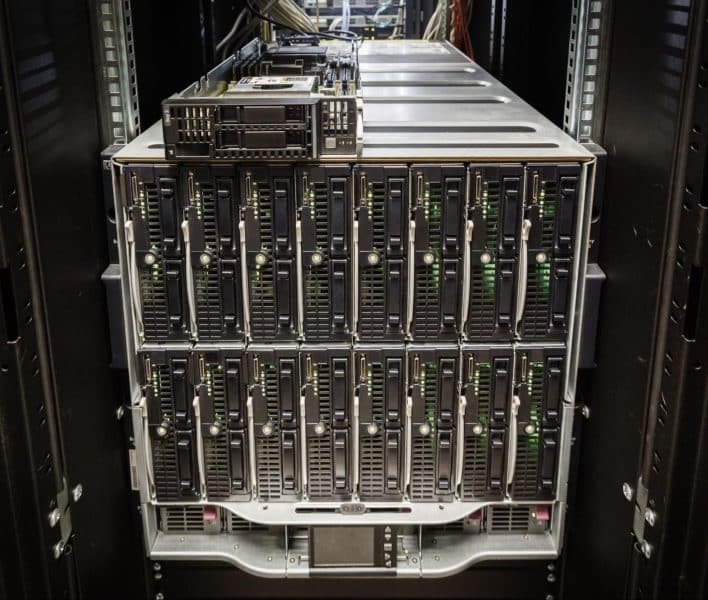In today’s fast-paced digital landscape, businesses rely heavily on efficient server infrastructure to support their growing data needs. As technology advances, maintaining optimal server performance becomes crucial. However, upgrading server hardware at the right time is essential to ensure efficiency, security, and cost-effectiveness.
This article will explore when and why you should upgrade your server hardware, key signs indicating the need for an upgrade, and the benefits of timely enhancements.
When Should You Upgrade Your Server Hardware?
Upgrading server hardware is a strategic decision that should be based on performance metrics, business growth, and evolving technological requirements. Here are key indicators that signal the need for an upgrade:
A. Performance Issues and Slow Response Times
If your server struggles to handle workloads, experiences frequent slowdowns, or has long response times, it may be time for an upgrade. Increased processing demands require powerful hardware to maintain optimal efficiency.
B. Increased Downtime and Frequent Failures
Unplanned server outages can be costly, leading to loss of productivity and revenue. If your server experiences frequent crashes or requires constant maintenance, it may be outdated and in need of replacement.
C. Rising Operational Costs
Older servers consume more power, generate more heat, and require extensive maintenance. If operating costs are rising, upgrading to energy-efficient hardware can help reduce expenses and improve sustainability.
D. Inability to Support Software Updates
New software versions often demand higher processing power, memory, and storage. If your existing hardware fails to meet software requirements, it’s a sign that an upgrade is necessary to maintain compatibility and performance.
E. Storage Limitations and Data Expansion
As businesses generate and store more data, server storage capacities must keep pace. If storage limitations are causing bottlenecks, an upgrade to higher-capacity drives or scalable storage solutions is recommended.
F. Security Vulnerabilities
Older server hardware may lack support for modern security protocols, leaving systems vulnerable to cyber threats. Upgrading to newer hardware with built-in security features ensures compliance with the latest cybersecurity standards.
Why Server Hardware Upgrades Matter
Investing in server hardware upgrades provides several long-term benefits that enhance business operations and security. Below are the primary reasons why upgrading is essential:

A. Improved Performance and Efficiency
Newer server hardware features advanced processors, increased RAM capacity, and faster storage solutions that improve overall system performance. This leads to better efficiency, reduced latency, and enhanced user experience.
B. Enhanced Reliability and Uptime
Upgraded servers come with modern cooling systems, better power management, and robust failover mechanisms. These features reduce the risk of unexpected failures and downtime, ensuring uninterrupted business operations.
C. Scalability for Future Growth
Businesses evolve, and their IT infrastructure should grow alongside them. Modern servers offer scalability, allowing companies to add resources as needed without investing in entirely new systems.
D. Reduced Maintenance and Support Costs
Legacy hardware often requires frequent repairs, which can be costly. Upgraded servers have longer lifespans, require less maintenance, and are easier to manage, reducing overall IT expenses.
E. Strengthened Security Measures
Modern servers include built-in security features such as encryption, secure boot, and advanced threat detection. These enhancements protect sensitive data and help businesses comply with industry security standards.
F. Energy Efficiency and Lower Power Consumption
Energy-efficient hardware reduces power consumption, lowering electricity costs and contributing to environmental sustainability. Newer components are designed with power-saving features that optimize energy use.
Key Server Components to Upgrade
When considering a server upgrade, focusing on specific hardware components can maximize performance and longevity. Here are the critical components to evaluate:
A. Central Processing Unit (CPU)
A faster, multi-core CPU improves processing speed and workload handling. Upgrading to a high-performance processor ensures efficient multitasking and faster data processing.
B. Memory (RAM)
Insufficient RAM can lead to slow application performance and system lag. Increasing RAM capacity enhances data access speeds, supports virtualization, and allows for smoother operations.
C. Storage Drives (HDDs/SSDs)
Traditional hard drives (HDDs) are slower and less reliable than solid-state drives (SSDs). Upgrading to SSDs improves read/write speeds, reduces boot times, and enhances overall system efficiency.
D. Network Interface Card (NIC)
A high-speed network interface card improves data transfer rates and ensures stable network connections. Upgrading NICs can enhance connectivity for cloud-based applications and remote access.
E. Power Supply Unit (PSU)
A reliable power supply ensures stable energy distribution to critical server components. Upgrading to an efficient PSU helps prevent power-related failures and ensures system stability.
F. Cooling Systems
Overheating can cause hardware degradation and system instability. Upgrading cooling solutions, such as improved heat sinks or liquid cooling, extends hardware lifespan and optimizes performance.
Best Practices for Server Upgrades
When upgrading server hardware, following best practices ensures a smooth transition with minimal disruptions. Here’s how to approach the process:
A. Conduct a Performance Assessment
Analyze current server performance to identify bottlenecks and determine which components require an upgrade.
B. Evaluate Business Needs and Growth Plans
Consider future business expansion and workload requirements when selecting new hardware.
C. Ensure Compatibility with Existing Infrastructure
Verify that upgraded components are compatible with existing software, network configurations, and security protocols.
D. Backup Critical Data Before Upgrading
Create a full backup of important data to prevent loss during the upgrade process.
E. Test New Hardware Before Full Deployment
Run performance tests on upgraded components to ensure stability and compatibility before integrating them into production environments.
F. Monitor Performance Post-Upgrade
Regularly monitor server performance to identify any issues and optimize configurations for maximum efficiency.














